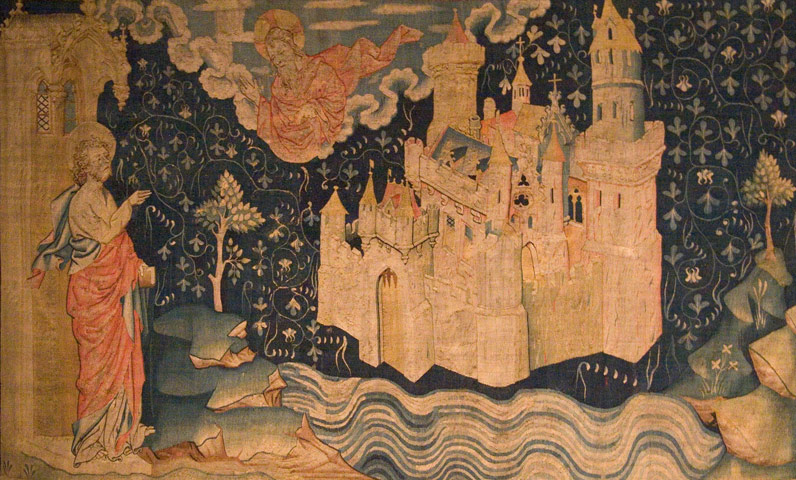Fr : version française / En: english version
mheu, Historical Museum of the Urban Environment
The Apocalypse Tapestry (detail)
Hennequin de Bruges

1382
103m X 4.5m
Château d'Angers
© wikicommons
View this work in the exhibition Babel to Dubai: Urban Utopias
The work
The Apocalypse Tapestry is an outstanding work commissioned by Louis I of Anjou, brother of King Charles V. It was designed by Hennequin de Bruges based on illuminations showing the Apocalypse of John. A technical masterpiece, it originally comprised six panels spanning a total of 140 meters, only two thirds of which remain. It was woven in Paris between 1373 and 1389 in the workshop of the highly respected Nicolas Bataille, using a low-warp technique: the weavers were given their model and worked horizontally from the back of the tapestry (checking their position by way of a mirror set below the loom). The tapestry was designed to be viewed from both sides and was perhaps used as a mobile partition, common in the Middle Ages.
The artist
Hennequin de Bruges, also known as Jan de Bruges, was a 14th century Flemish painter, whose work spans the period 1368 and 1381. Little is known about his life, though it is clear that he worked for France's royal court, where he was favored by Charles V. His most well-known pieces include an illuminated bible made for the king and his cartoons for the Apocalypse Tapestry, designed for Louis I of Anjou.